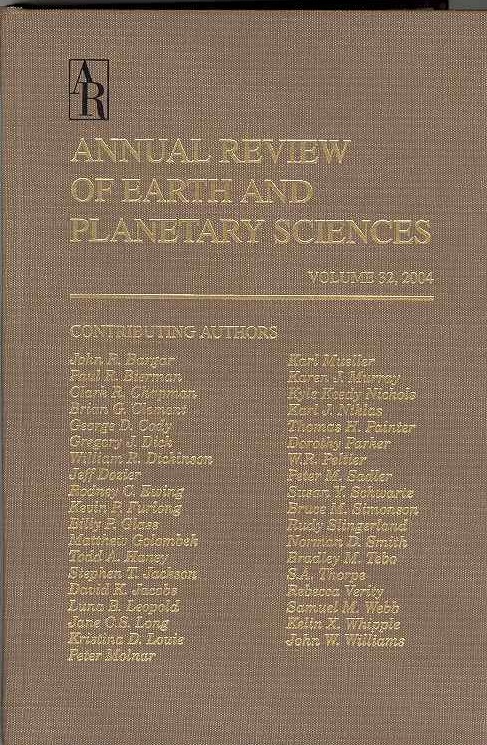景观水文功能中的启发性惊喜
IF 13
1区 地球科学
Q1 ASTRONOMY & ASTROPHYSICS
Annual Review of Earth and Planetary Sciences
Pub Date : 2023-01-10
DOI:10.1146/annurev-earth-071822-100356
引用次数: 2
摘要
景观从降水中吸收水分,然后运输、储存、混合和释放,向下流向溪流,向上流向植被。它们如何做到这一点,决定了洪水、干旱、生物地球化学循环、污染物运输以及陆地和水生生态系统的健康。由于许多关键过程在地下无形地发生,我们对它们的概念化常常严重依赖于物理直觉。然而,近几十年来,这种直觉在很大程度上被实地观察和新兴的测量方法所推翻,特别是涉及同位素示踪剂的测量方法。在这里,我们总结了在山坡和流域尺度上改变我们对水文过程理解的关键惊喜。这些意外迫使人们从相对静态的、同质的、线性的和平稳的过程概念化转变为主要是动态的、异质的、非线性的和非平稳的过程概念化。▪令人惊讶的观察和新颖的测量正在改变我们对景观水文功能的理解。即使在暴风雨高峰期,水流也主要是由储存在地面上数周、数月或数年的水组成。▪溪流和树木的水分吸收通常来自不同的地下储存和不同季节的降水。▪河流网络会随着景观的湿润和干燥而动态地扩展和收缩,许多河流会失去流入地下含水层的流量。《地球与行星科学年鉴》第51卷的最终在线出版日期预计为2023年5月。修订后的估计数请参阅http://www.annualreviews.org/page/journal/pubdates。本文章由计算机程序翻译,如有差异,请以英文原文为准。
Instructive Surprises in the Hydrological Functioning of Landscapes
Landscapes receive water from precipitation and then transport, store, mix, and release it, both downward to streams and upward to vegetation. How they do this shapes floods, droughts, biogeochemical cycles, contaminant transport, and the health of terrestrial and aquatic ecosystems. Because many of the key processes occur invisibly in the subsurface, our conceptualization of them has often relied heavily on physical intuition. In recent decades, however, much of this intuition has been overthrown by field observations and emerging measurement methods, particularly involving isotopic tracers. Here we summarize key surprises that have transformed our understanding of hydrological processes at the scale of hillslopes and drainage basins. These surprises have forced a shift in perspective from process conceptualizations that are relatively static, homogeneous, linear, and stationary to ones that are predominantly dynamic, heterogeneous, nonlinear, and nonstationary. ▪ Surprising observations and novel measurements are transforming our understanding of the hydrological functioning of landscapes. ▪ Even during storm peaks, streamflow is composed mostly of water that has been stored in the landscape for weeks, months, or years. ▪ Streamflow and tree water uptake often originate from different subsurface storages and from different seasons’ precipitation. ▪ Stream networks dynamically extend and retract as the landscape wets and dries, and many stream reaches lose flow into underlying aquifers. Expected final online publication date for the Annual Review of Earth and Planetary Sciences, Volume 51 is May 2023. Please see http://www.annualreviews.org/page/journal/pubdates for revised estimates.
求助全文
通过发布文献求助,成功后即可免费获取论文全文。
去求助
来源期刊

Annual Review of Earth and Planetary Sciences
地学天文-地球科学综合
CiteScore
25.10
自引率
0.00%
发文量
25
期刊介绍:
Since its establishment in 1973, the Annual Review of Earth and Planetary Sciences has been dedicated to providing comprehensive coverage of advancements in the field. This esteemed publication examines various aspects of earth and planetary sciences, encompassing climate, environment, geological hazards, planet formation, and the evolution of life. To ensure wider accessibility, the latest volume of the journal has transitioned from a gated model to open access through the Subscribe to Open program by Annual Reviews. Consequently, all articles published in this volume are now available under the Creative Commons Attribution (CC BY) license.
 求助内容:
求助内容: 应助结果提醒方式:
应助结果提醒方式:


